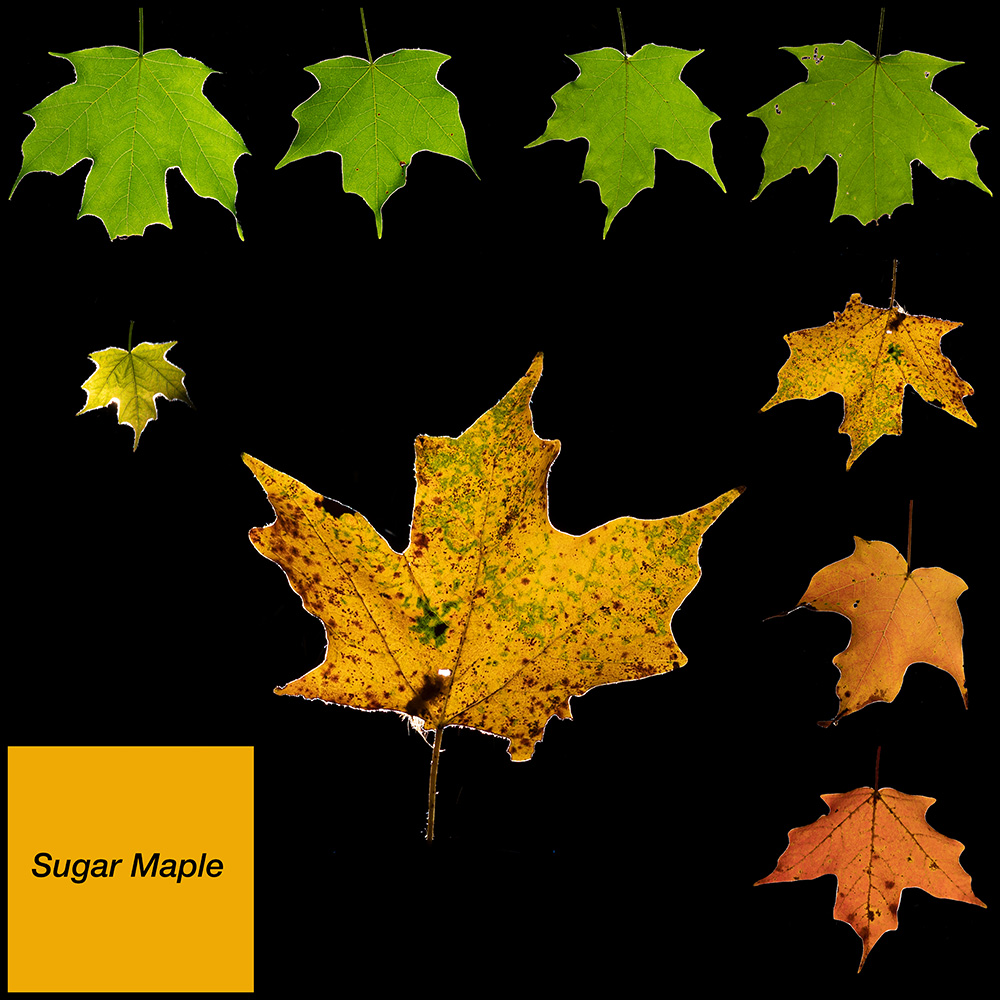“The new dawn blooms as we free it
For there is always light,
if only we’re brave enough to see it
If only we’re brave enough to be it ”
–Amanda Gorman (The Hill We Climb)
“There is unrest in the forest
Trouble with the trees
For the maples want more sunlight
And the oaks ignore their pleas
…
Now there’s no more oak oppression
For they passed a noble law
And the trees are all kept equal
By hatchet, axe, and saw”
–Neil Peart (The Trees)
Photographing Leaf Color
As sabbatical commences a book is in the works. The book documents, explains, and philosophizes on the colors of leaves based on a multi-year journey that climaxed with the collection and photography of leaves from 37 trees during the 2021 growing season. Each leaf was photographed in a custom-built illumination box. The box was black on all sides with an opening for the camera view and a small fiber optic illuminator on the opposite side. Leaves were hung in the path of light between the fiber optic source and the camera. Thus the images collected are of the light transmitted through the leaves on a completely black background. The accompanying image shows the set of images for a Sugar Maple tree through the year with the October 15, 2021 image highlighted in the center. The book will show these collections by tree, other collections by date (of all the trees), and some individual artistic images. It will also provide a color science analysis of the results and some natural history of the trees and areas where they live(d).

Spring as a Preview of Fall
Much has been learned about trees, nature, photography, and myself during this process, which began in 2019 with the construction of the imaging system, followed in 2020 with the selection of trees, peaked in 2021 with the actual data collection, and is progressing in 2022 with the image processing and creation of the book (to be delivered to the publisher around January 1, 2023).
One of the most fascinating and striking observations of this project so far are the colors of the newly budded “infant” leaves early in the spring. For just a few days in the spring, these tiny specimens emerge and begin to grow and produce the chlorophyll that gives them their summertime green hue. But when they first emerge, they seem to have very little chlorophyll. It is well established that the wonderful fall colors of leaves are largely due to pigments present in the leaf all year, but masked by chlorophyll in the summer. It is when the leaves stop the photosynthesis process in the fall that the chlorophyll breaks down and the other hues are observed. However, it is not as widely discussed that the very early spring leaves also give a preview of the fall colors before they fill with chlorophyll. Why wouldn’t they. This image shows some remaining yellowish hue in the “infant” leaf as the chlorophyll has started to form. Other examples show this effect even more strongly depending on how quickly after bud break the first samples were collected.
The Cycle is Variable
Like the cycle of the leaves themselves, the cycle of hue in the leaves is very real and readily observed and recorded. It was scientifically documented and visualized by plotting the leaves, with their colors, in various slices of the Munsell color system. The flow of color through the season was enlightening and adds depth to both the understanding of trees and the understanding of color science. The cycle is complete, only to start again. While the cycle is very real, it is also not fixed. The cycle varies as does everything in nature. Some of the observed variability includes the expected differences from tree species to tree species. In fact, such variability can be found within species as observed in three adjacent Sugar Maples of similar origin and age. Each fall, one turns red, one orange, and one yellow. The exact hues vary each year but the relationship holds. This project has also revealed huge variations within a tree from year to year. Going on the third year of careful observations, it is clear that the leaf cycle is highly dependent on weather, climate, and outside influences. Lastly some red pigments are indeed formed in the fall, so they are not present in the spring buds. Every cycle is simple, yet very complex. Just like people. Not only is our appearance an individual variable of pigmentation, but our perception of color varies significantly as well. Each of us sees the leaves slightly differently. Why should it be otherwise?
Next up; ???